As an Amazon Associate I earn from qualifying purchases.
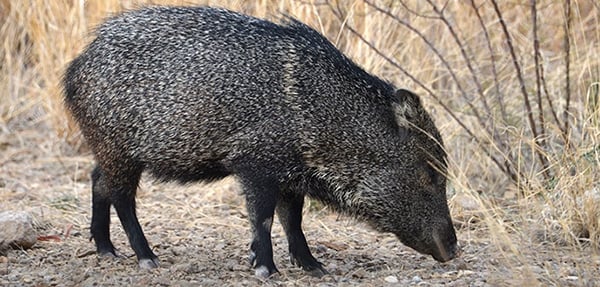
I had the opportunity to hunt whitetail deer in south Texas recently, and while I did see some nifty bucks, I didn’t shoot one. I did, however, shoot a javelina, and to be honest, I was more excited about that than about any of the deer I saw. Not that I don’t love deer hunting, but I can hunt deer all over the continent. Javelina are special. In the United States, they only live in Texas, New Mexico and Arizona.
I know, I know. I can hear some of you groaning. Skunk pigs? Seriously? Seriously. Walk with me for a moment.
Part of my fascination is the animal itself, which is every bit as unique in North America as is the enigmatic pronghorn. But mostly I wanted to test the conventional “wisdom” that javelina are inedible. I felt in my bones that this was cowboy snootiness derived from the fact that the little piggies rub themselves all over with a scent gland on their backs to make sure everyone in the herd smells just right. And yeah, that scent is musky, in a men’s locker room kinda way.
But I’d seen my friend Andrew Zimmern eat them with no complaints, and many of my friends in New Mexico and Arizona tell me they love them. It was only in Texas where they held an unsavory reputation.
I am happy to report that the myth of the inedible javelina is indeed just that: a myth. The javie I shot in the rain that day tasted fantastic slow cooked as cochinita pibil, a Yucatecan dish with lots of achiote and citrus; recipe is in that hotlink.
What’s more, I grilled the backstraps and tenderloins over mesquite to a solid medium and they were epic. Epic, I tell you. As in, screw venison, I want this every day.
Let’s start with a bit more on the animal. A javelina is a New World pig, Tayassu tajacu in Latin. More specifically this is a collared peccary; there are two, maybe three other species of New World pig wandering around in Central and South America. A long time ago there was a common ancestor to the javelina and the pigs we all know and love as bacon, but they diverged about 40 million years ago by most reckonings.
To put that in perspective, higher primates like us were just getting started back then. So yeah, javies are related to pigs, but only in a galactic sense.
Javelina aren’t large. Eighty pounds is a monster, and mine was closer to 45 pounds. They can’t see worth a damn, having a hard time focusing past 100 yards. Their hearing is OK, but ours is better. Where they excel is their nose; javelina have an excellent sense of smell.
They like to wander around in family groups of between 10 and 50, and are more or less mellow unless provoked. If threatened, they will let you know why the Spanish named them for their javelin-like canine teeth, which are truly ferocious. The clack them together loudly.
Their diet gives us a clue about how they’d taste. Short version: Awesome, and here’s why — javelina are vegetarians by choice. Sure, they’ll eat dead birds and carrion and bugs, but several studies have shown that animal matter comprises just 1 percent of a peccary’s diet.
Humans in general prefer to eat herbivores first, omnivores — like true pigs — second, and carnivores, third. So this fact alone would suggest that a javelina will taste at least as good as pork, if not better.
What sort of plants does Gregory Peccary like? (If you get that reference, you win a prize) By all accounts, the thing they love best are prickly pear cacti. They also love to eat mesquite beans, as well as those of palo verde, lupines and ironwood. They like other cacti, too, and use those teeth to hammer underground tubers, rhizomes and bulbs. They’re big fans of acorns when they can find them.
Note that nothing in this list can possibly lend itself to a bad-tasting animal, especially considering that pretty much everything javelina eat humans do, too.
If you want to read more about javelinas from a biologist’s point of view, there’s a cool .pdf on them from the Texas Dept. of Wildlife, and another excellent webpage on them done by the National Park Service. And there’s a whole website devoted to hunting javelina called, as you might expect, javelinahunter.com.
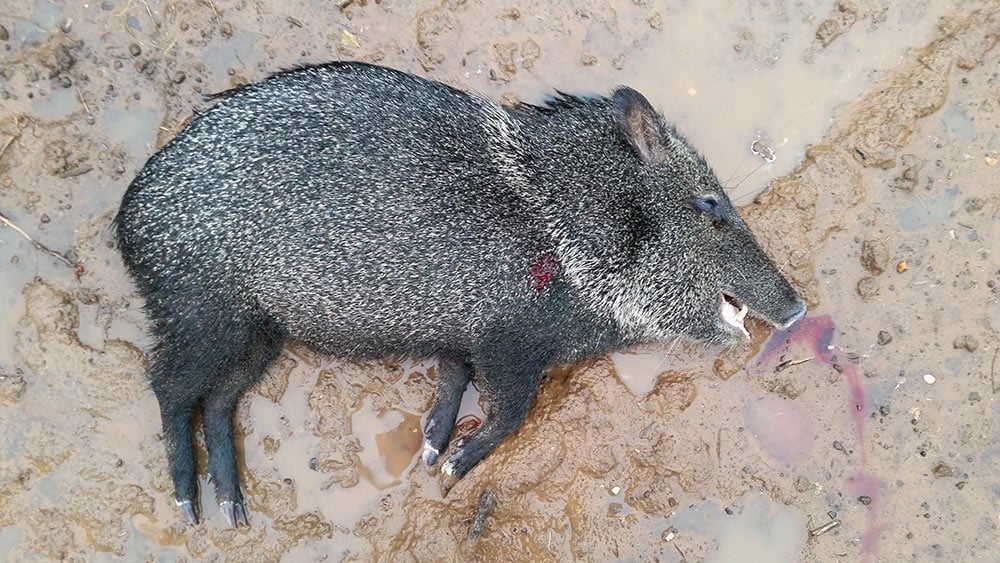
Now. About that smell.
The javie I shot had absolutely no odor. None. Yes, it was a sow, but still. The second javelina, shot by my host so I could bring one home to experiment with, also had no real odor other than your typical dead pig smell, which isn’t lovely, but nor is it so revolting I’d want to toss the thing. It was nothing like the boar taint you’ll smell on an old boar hog, that’s for sure.
Everyone told me to watch out for the scent gland on the small of the back. So I did. When I got around there with my skinning knife, I was very, very careful… for no reason. The scent gland is basically in the skin. Skinning the animal as you would any other was perfectly fine. Yes, I made sure I did not grab the area of the scent glad to pull the hide down, but nor was it tricky to get past it. In short, dealing with the scent gland was no biggie.
If you are extra worried about the odor on the hair getting on the meat, wear a pair of gloves while skinning, then toss those gloves when you gut and butcher — or wear a second pair.
A second pair of gloves may not be a bad idea, as javelina are known to carry salmonella. According to this study, javelina can also carry E. coli bacteria, although not the nasty E. coli 0157 that can really mess you up.
But fascinatingly, an extensive search of the scientific and health literature found no record of peccaries ever carrying the trichinae larvae that can cause trichinosis. (Here’s one study that tried to locate it, but came up with nothing.) No trich in javelina? Interesting. Only explanation I can think of is how small a percentage animal matter is in a javie’s diet. Vegetarians rarely carry the parasite — omnivores and carnivores do.
Bottom line: Eat your javelina. And cook it like domestic pork, to which it is related. And since there is no evidence of trichinae in javelina, that means you should be able to serve the meat at an interior temperature of 145°F, which is cooked, but with a lovely blush of pink.
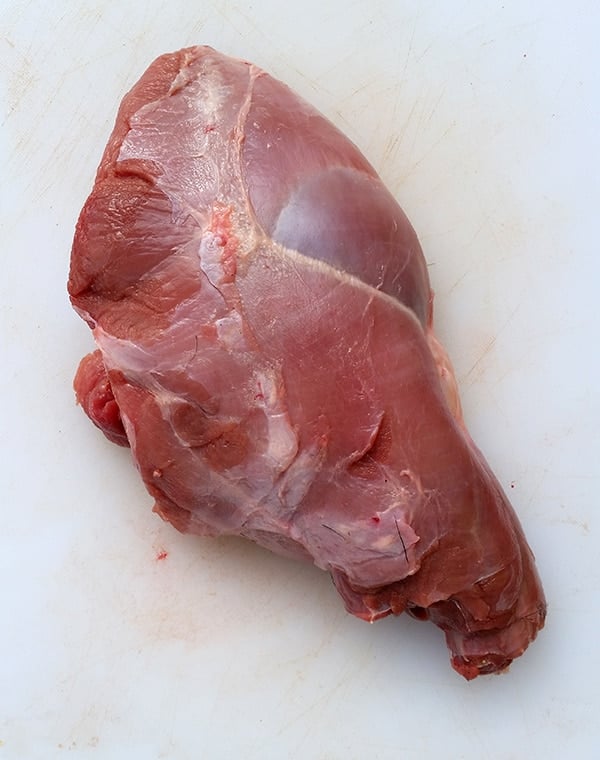
The meat is light colored, very lean and the shoulders and hams lend itself to slow-cooker or Dutch oven cookery. Think pulled pork and you’re on the right track. The backstraps are excellent grilled or seared to a solid medium.
Since it lives in Mexico, South America and our own Desert Southwest, it’s a natural to go there in terms of cuisine. Chile verde, mole, pit cooking, that sort of thing. No reason to stay there, though, as any sort of slow-cooked pork dish would work with a javelina. Southern pulled pork BBQ would be damn good. Maybe a Hawaiian luau?
My one piece of advice on cooking javelina that differs from pork is its need of fat: Javelina are super lean, so always add some fat when you pull the meat. I like pork lard or duck fat, but any sort of yummy fat, whipped or stirred into the pulled meat and sauce will do wonders.
And when you’re ready, make my all-time favorite javelina recipe, this javelina stew from the Yucatan in Mexico.

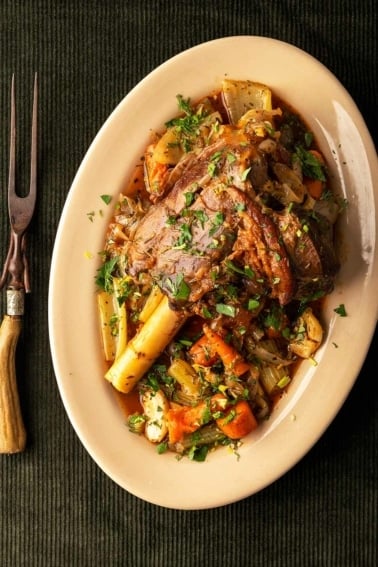
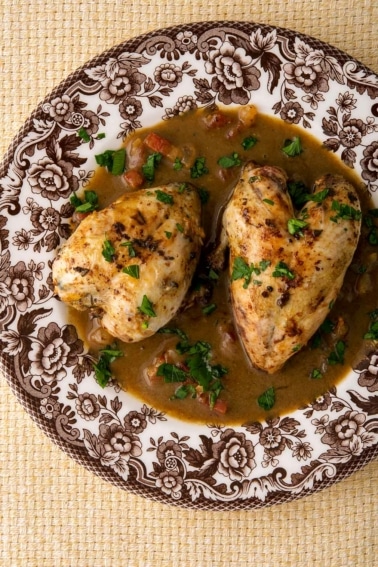
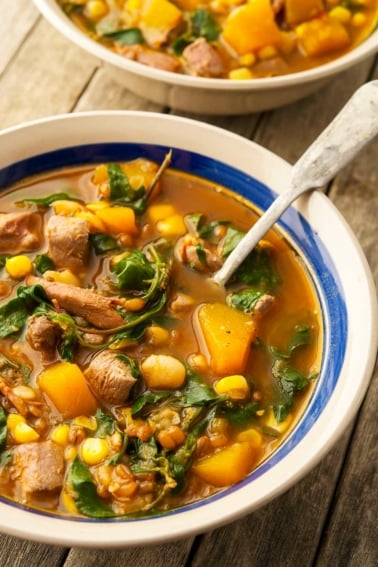
I got the reference but you don’t get a prize…Frank Zappa spelled it Greggery Peccary.
I have a whole javelina in my freezer that a close hunting buddy brought me from a south Texas hunt. It has been skinned and head/hooves removed. I have an upcoming game feed and I am starting to plan how I want to cook the javelina. I have access to a rotisserie whole hog roaster. Do you think this would be a good way to cook the javelina whole? I also have some other wild game roasts/bone in whole shoulders that I am considering also cooking on the rotisserie, any tips and advice you have for this method of cooking wild game would be much appreciated!
Dylan: I like grilling the loins and slow roasting the hind legs and stewing the front legs.
Great Article! I’ve hunted and eaten javelina for years. We De-bone and cut it into 3″×3″ chunks. Since it is so lean we add a pork butt roast chopped up. We layer the meat in a slow cooker and top it with chopped up sweet onions, celery, green olives, 3 chopped up garlic cloves per layer, half a bottle of yellow peppercorn chili and 3-8oz cans of tomatoes sauce. You can usually get 2 layers. Top it off with 1 can of beer or a can of beef boullion. Start off on high heat when it starts to boil lower to 225 and cook for 8 hours. Shred it up and add salt to taste. We put it in a tortilla with salsa and it is out of this world. I worked and retired from the Grand Canyon National Park Service and I would take it to work to let everyone try it for themselves. Word got out and employees from all divions would show up to try it. Enjoy
Hi, thanks for the article, I loved all the tips. One thing I didn’t get that I was looking for is- does Javelina make good bacon – or can you make it at all being so lean and not being related to a pig?
Siddeeq: I’ve never seen one fat enough for bacon.
Hi Hank,
Really appreciate the article. I harvested my first javelina in February in Arizona and am looking forward to trying this recipe along with some others. I was wondering if you had any information about calorie counts in javelina? I have looked all over and can’t find any data. If you have an idea of what that is I would really appreciate it.
Dallas: Hard to say, but they would be like very very lean pork.
They are called new world pigs, yes, but they are not related. The closest thing they are relate to is sheep, goats and deer. It’s all about the hooves.
I had the same reaction to this article. Dispel the myth that javelina are pigs, Hank! They’re piccory. Not in the same family of pigs.
Glad to hear cochinita pibil made this guy edible!
Always fun to run into a fellow Frank Zappa fan. Check out the Zappanale fest in Bad Doberan, Germany. 3 Days+ of FZ inspired Music. It has been cancelled this Summer. See you there sometime, July 2021 !!!
I just happened to go on line. To find recipes for javelina And ran across your blog. And watched a video interview of you in Oregon, very interesting I’ve lived off the grid. 46 years of my 61 years on this planet I hunt or fish. Least 5 days a week, And was commercial fisherman. On the North Coast for many years, and have foraged all over this land, especially the Pacific Northwest For everything from Palms, fiddle ferns to mushrooms , mollusk Etc we have a 2040 acre family ranch in Humboldt County, Northern, California, also I have a 80 acre piece in the White Mountains of Arizona Near st. John’s and Show Low Arizona, I’m currently on my Ranch. In South, Texas and was sitting in my deer blind yesterday. And had 15 javelina come around the feeder. And around my deer blind, so I decided I should probably Harvest a javelina. It’s The only thing I haven’t shot on the ranch. I’ve got quail. , cottontails, deer, pigs, geese sometimes, sandhill cranes on occasion and of course rattlesnakes So I’m eating a lot of wild game all the time no matter where I’m at. Whether it be, Texas. Arizona or Northern, California and I’m So happy I found your site. And your books, they will help greatly. In my endeavor to be self-reliant and live my off the Grid sustainable life. Anyway I’m glad I found your site. Thank you very much for What you do. Keep up the good work. Charles Warren
My buddy and I just harvested one each at a new deer hunting location here in west Texas. They love corn by the way.
I took great care in the field dressing them and got them cold very quickly. I’ll post up here when I butcher and try some.
Good article and well written. If you are still interested in javelina hunting you might find this article interesting. Thanks for sharing. https://www.foundry35.com/blogs/blog/javelina-hunting-guide-for-beginners-4-helpful-things-to-know
Maybe someone has already pointed this out, but javalina, despite superficial appearances, are not related to pigs. They’re collared peccaries and are a different species from pigs, whether domestic or feral. They’re so different they can’t interbreed.
B Bonine: Everything you say is correct… except they are related to pigs. Just not as closely as people think.
They are not related to pigs. They dont even go to the same family reunion.
Jacob: Yes they are. Peccaries are considered New World pigs, while all the other suidae are Old World pigs. It is true that they are not as close on the genetic tree as people think they are — they cannot cross breed, for example — but in a macro sense, yes, they are related, if distantly.
Great read!!
I am in southern Chile camping on 25 acres I purchased a couple of years ago.
Today I came across a lone javelin, as they call them here.
Private gun ownership is reserved for the carabineros(cops), and hunters, but only if you belong to a hunting club. You can purchase and use powerful air rifles at grocery stores.
Im not sure if trapping is allowed but will look into this
I do not believe an air-rifle will take down a Javie….you may want to try bow hunting?
You may want to look into big bore, pre charged pneumatic airguning. People have harvested bear and buffalo with them. My current is 30 cal, like 308, 30-06 and such. Mostly bolt action and not quite as fast ballistically as a powder gun. Think more powerful than a pistol, less than a riffle. It’s not the same air gun of your Father’s Day.